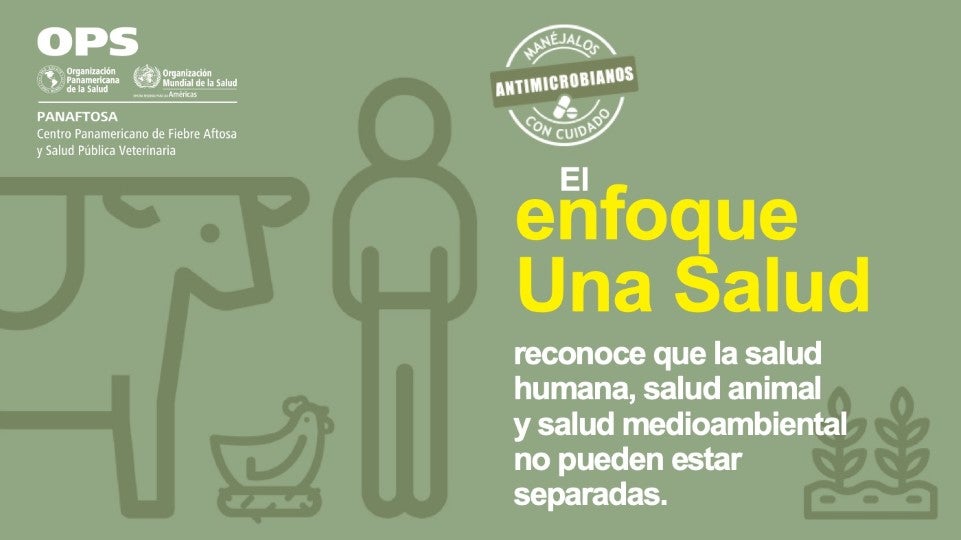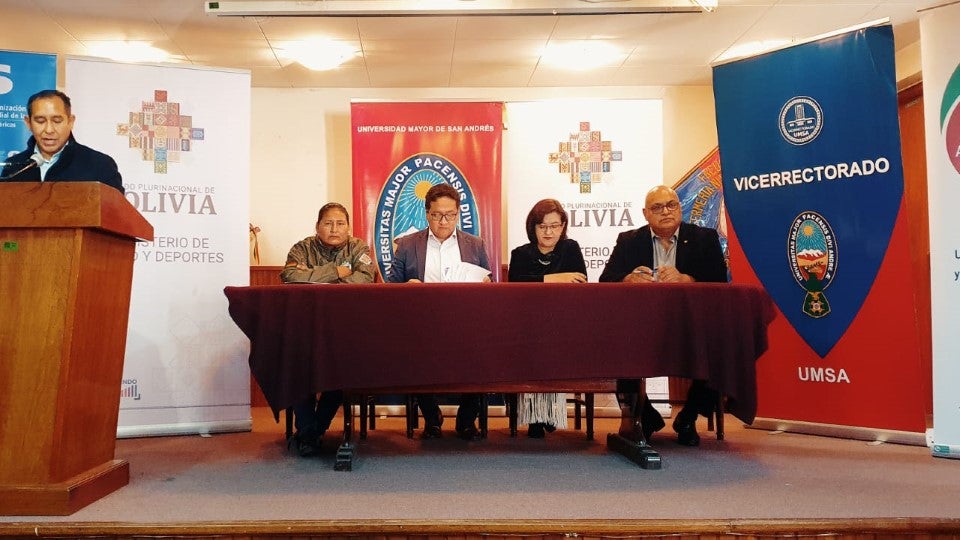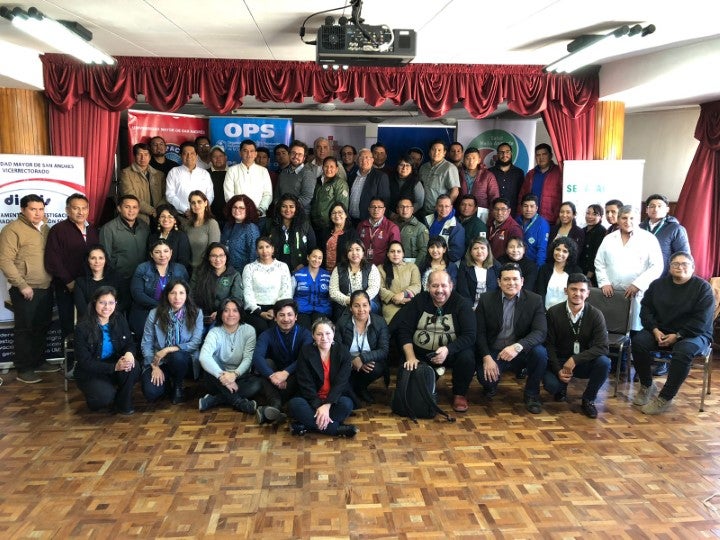La Paz, 1 August 2023 (PAHO) – To facilitate the development of pandemic influenza preparedness and response plans, as well as other respiratory viruses, a meeting of human and animal health epidemiologists, statisticians and analysts from across the country was convened under the leadership of the Ministry of Health and Sports, at Based on the chapter on the human-animal interface under the concept of “One Health”.
One Health is an integrated approach to address health threats between humans, animals and the environment.
Ministry of Health and Sports, with the support of the Pan American Health Organization/World Health Organization (PAHO/WHO), with the participation of the Vice-Chancellor of the University of the Mayor and the Department of Research, Postgraduate Studies and Social Interaction (Dipgis) San Andres de la Ba UMSA and the German Association for International Cooperation (GIZ, abbreviated in German) promoted the content of the ninth workshop, on the theme “One Health”, aimed at developing a national respiratory plan for pandemic preparedness and response.
The aim of the workshop was to identify weaknesses and barriers in the prevention, response and control of epidemic outbreaks at the human-ammonia interface for the development of pandemic preparedness and response plans for influenza and other respiratory viruses; conduct a scenario diagnosis of progress made in collaborative work planning and monitoring to strengthen the development of new plans; and identify actions necessary to strengthen collaborative monitoring at the human-animal interface.
The human-animal interface workshop completes all the outlines needed to develop a program. Preparedness at the human-animal interface includes joint preparedness, surveillance, and response plans for respiratory pathogens in human and animal populations, including wild animals, domestic species, and livestock.
Controlling animal diseases is the first step in reducing risks to humans. Therefore, prevention and control actions in animal and human health must be carried out in a coordinated manner under the One Health strategy.
National Program Seminar Series
Nine workshops have been held so far, aimed at learning lessons learned during the COVID-19 pandemic and analyzing existing gaps in different topics flagged in the International Health Regulations (IHR). These workshops address human resource preparedness in a pandemic, enhanced diagnostic and genomic surveillance, risk communication, epidemiological surveillance, maintenance of essential services, logistics management of medicines and supplies, and strengthening points of entry.
As a result of the workshop, components of collaborative epidemiological surveillance for pandemic influenza preparedness and response plans and other respiratory viruses that corresponded to the human-animal interface were planned; improvements and strengthening of collaborative surveillance for the human-animal interface were identified developing and agreeing on a roadmap for collaborative surveillance of the human-animal interface; developing tools from PAHO/WHO and GIZ to support the development and updating of national collaborative surveillance plans for the human-animal interface.
recurring threat
Participants agreed that influenza pandemics are recurring events that pose a major threat to global health security due to their unpredictability and potentially devastating health and economic consequences around the world.
The COVID-19 pandemic, along with the 2009 H1N1 influenza A pandemic and the recent avian influenza outbreak, revealed best practices and gaps in pandemic preparedness activities, including in the area of human-machine interface surveillance. Assured zooepidemiological surveillance is particularly important for collaborative surveillance operations, as respiratory viruses can be transmitted from animals (particularly birds) to humans. Delays or failures in collaborative surveillance efforts could have serious consequences in the event of transmission of a novel respiratory virus with epidemic and pandemic potential.
With the support of the Pandemic Influenza Preparedness (PIP) Framework and the Second Pandemic Preparedness Plan (HLIP II), 2018-2023, WHO and its partners are working to strengthen global pandemic preparedness to ensure timely , adequately respond to the next pandemic. One of the fundamental elements of pandemic preparedness and response is ensuring adequate epidemiological surveillance of human-animal contact.
As part of its capacity-building efforts in this area, WHO is supporting countries to develop and regularly review global and national plans for collaborative monitoring of potential pandemic events. For example, the response to avian influenza outbreaks is the best space for countries to participate in adapting and developing national preparedness and response plans for these events.
As background, the country developed the National Avian Influenza-Pandemic Influenza Preparedness and Response Plan in 2008 and updated it in 2011, which is undoubtedly an important document for developing the new interface collaborative surveillance preparedness plan. before the new event.





